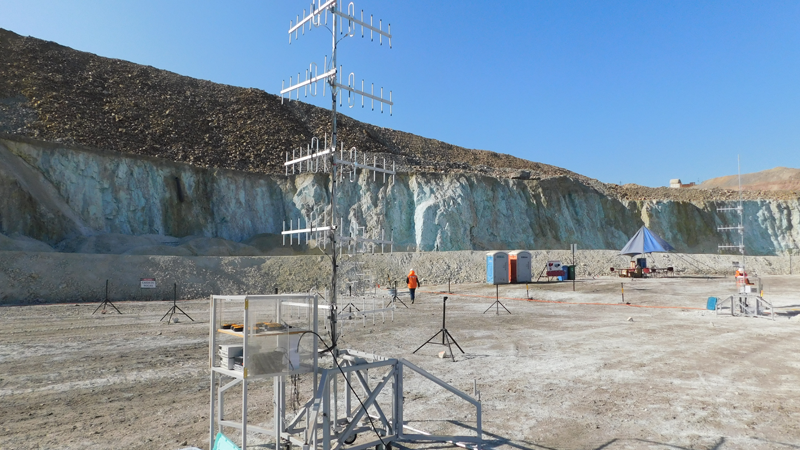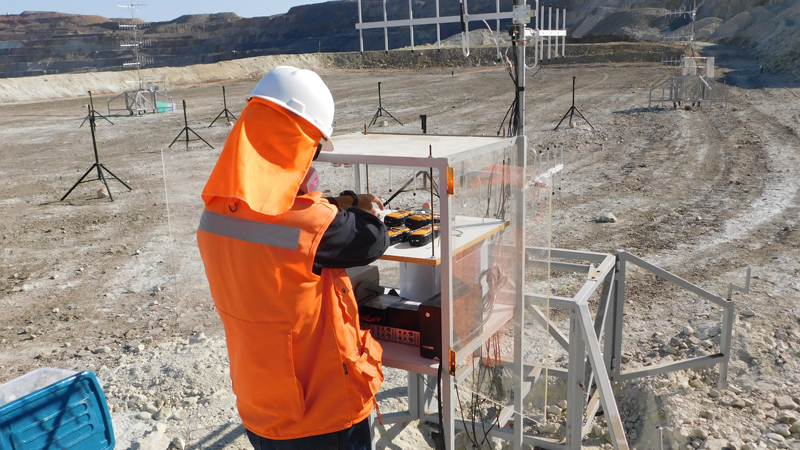Photo: Air quality monitoring stations at Carmen de Andacollo Operations, Chile.
Teck’s Carmen de Andacollo (CdA) Operations is located in the Coquimbo region of central Chile, directly adjacent to the town of Andacollo. The Andacollo community has a long history of mining gold and copper, and Teck’s CdA facility today produces copper concentrates and cathode for use around the world. In 2009, the air around Andacollo was found to be high in dust and particulate matter of a size less than 10 microns (known as PM10); thought to be due to the strong mining tradition of the area, mountainous landscape and arid climate.
As a result of this finding, local and national governments in Chile designated the area as a PM10 saturated zone. In response, Teck specialists at CdA worked with the local government and communities to develop the Atmospheric Decontamination Plan (ADP), with the goal of lowering dust emissions by 65% by 2017. The ADP introduced multiple measures to improve air quality in the Andacollo region such as monitoring wind direction to develop the blasting process, applying dust suppressants on and off site, and washing the streets after rain.
Thanks to the hard work of all partners, a 78% reduction in PM10 emissions was achieved by 2017. We continue to implement more measures and conduct research on innovative approaches that may further reduce dust emissions.
Our Approach to Improving Air Quality
Since the launch of the ADP, Teck has worked intensively on air quality research and innovation. Our long-term approach to air quality considers the health, safety and sustainability of employees and the town of Andacollo.
The team at CdA have implemented several measures to contribute to our success. We continuously monitor the operation, including installing cameras to remotely monitor the trajectory of blasting and measure the efficacy of our dust mitigation measures. By monitoring the wind direction and speed, we can ensure dust particles from our blasting activities do not affect the nearby Andacollo community. Lastly, we have mandated washing wheels of all vehicles before leaving the operation to ensure dust particles do not spread to roads outside of CdA.
Because CdA operates close to the Andacollo community, we have also added measures within the city to enhance dust mitigation. These include adding dust suppressants such as water and bischofite, a sea salt concentrate. Water absorbs dust particles while the salt draws moisture from the air and provides further dust suppression. Additionally, we sweep and vacuum the roads in and around CdA, as well as the streets of Andacollo. Teck shares real-time data on air quality management with the community through an interactive map available on our website.
We also continue to conduct research on innovative approaches that may reduce dust emissions. One initiative that we are currently exploring is the use of electromagnetic waves to decrease airborne PM10 particles. In studies, electromagnetic waves can cause PM10 particles to become attracted to each other – similar to static cling. Once the particles stick together, they become too heavy to stay airborne and drop to the ground. The electromagnetic waves would be distributed by a self-sustaining system, ensuring operational continuity of the electromagnetic wave dome created.
We will continue working with the community and authorities to address shared priorities such as air quality. We look forward to further demonstrating how the mining sector can work together with our communities to create positive change.
Learn more about our approach to Air Quality Management on our website.



